Rachmaninoff – Symphony No. 2 in E minor, Op. 27 3rd mov. Adagio (Advanced piano solo) with sheet music
provider: dailymotion
url: https://dai.ly/k2Q7gkVL4de2eZxJpZF
src: https://geo.dailymotion.com/player.html?video=x88rdob&
src mod: https://geo.dailymotion.com/player.html?video=x88rdob
src gen: https://geo.dailymotion.com/player.html?video=k2Q7gkVL4de2eZxJpZF
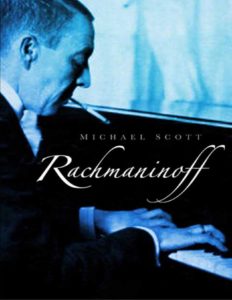
Sergei Vasilyevich Rachmaninoff (Russian: Серге́й Васи́льевич Рахма́нинов, born 1 April [O.S. 20 March] 1873 – 28 March 1943) was a Russian composer, virtuoso pianist, and conductor of the late Romantic period. The influence of Tchaikovsky, Rimsky-Korsakov, Balakirev, Mussorgsky, and other Russian composers is seen in his early works, later giving way to a personal style notable for song-like melodicism, expressiveness and rich orchestral colours.
Born into a musical family, Rachmaninoff took up the piano at the age of four. He graduated from the Moscow Conservatory in 1892, having already composed several piano and orchestral pieces. In 1897, following the negative critical reaction to his Symphony No. 1, Rachmaninoff entered a four-year depression and composed little until successful therapy allowed him to complete his enthusiastically received Piano Concerto No. 2 in 1901. In the course of the next sixteen years, Rachmaninoff conducted at the Bolshoi Theatre, relocated to Dresden, Germany, and toured the United States for the first time. Rachmaninoff often featured the piano in his compositions, and he explored the expressive possibilities of the instrument through his own skills as a pianist.
Following the Russian Revolution, Rachmaninoff and his family left Russia. They settled in New York City in 1918. With his main source of income coming from piano and conducting performances, demanding tour schedules led to a reduction in his time for composition. Between 1918 and 1943, he completed just six works, including Rhapsody on a Theme of Paganini, Symphony No. 3, and Symphonic Dances. By 1942, his failing health led to his relocation to Beverly Hills, California. One month before his death from advanced melanoma, Rachmaninoff was granted American citizenship.
Works

The cadenza of Piano Concerto No. 3 is famous for its grand chords.
Rachmaninoff wrote five works for piano and orchestra: four concertos—No. 1 in F-sharp minor, Op. 1 (1891, revised 1917), No. 2 in C minor, Op. 18 (1900–01), No. 3 in D minor, Op. 30 (1909), and No. 4 in G minor, Op. 40 (1926, revised 1928 and 1941)—plus the Rhapsody on a Theme of Paganini. Of the concertos, the Second and Third are the most popular.[176]
Rachmaninoff also composed a number of works for orchestra alone. The three symphonies: No. 1 in D minor, Op. 13 (1895), No. 2 in E minor, Op. 27 (1907), and No. 3 in A minor, Op. 44 (1935–36). Widely spaced chronologically, the symphonies represent three distinct phases in his compositional development. The Second has been the most popular of the three since its first performance. Other orchestral works include The Rock (Op. 7), Caprice bohémien (Op. 12), The Isle of the Dead (Op. 29), and the Symphonic Dances (Op. 45).
Works for piano solo include 24 Preludes traversing all 24 major and minor keys; Prelude in C-sharp minor (Op. 3, No. 2) from Morceaux de fantaisie (Op. 3); ten preludes in Op. 23; and thirteen in Op. 32. Especially difficult are the two sets of Études-Tableaux, Op. 33 and 39, which are very demanding study pictures. Stylistically, Op. 33 hearkens back to the preludes, while Op. 39 shows the influences of Scriabin and Prokofiev. There are also the Six moments musicaux (Op. 16), the Variations on a Theme of Chopin (Op. 22), and the Variations on a Theme of Corelli (Op. 42).
He wrote two piano sonatas, both of which are large scale and virtuosic in their technical demands. Rachmaninoff also composed works for two pianos, four hands, including two Suites (the first subtitled Fantasie-Tableaux), a version of the Symphonic Dances (Op. 45), and an arrangement of the C-sharp minor Prelude, as well as a Russian Rhapsody, and he arranged his First Symphony (below) for piano four hands. Both these works were published posthumously.
Rachmaninoff wrote two major a cappella choral works—the Liturgy of St. John Chrysostom and the All-Night Vigil (also known as the Vespers). It was the fifth movement of All-Night Vigil that Rachmaninoff requested to have sung at his funeral. Other choral works include a choral symphony, The Bells; the cantata Spring; the Three Russian Songs; and an early Concerto for Choir (a cappella).
He completed three one-act operas: Aleko (1892), The Miserly Knight (1903), and Francesca da Rimini (1904). He started three others, notably Monna Vanna, based on a work by Maurice Maeterlinck; copyright in this had been extended to the composer Février, and, though the restriction did not pertain to Russia, Rachmaninoff dropped the project after completing Act I in piano vocal score in 1908; this act was orchestrated in 1984 by Igor Buketoff and performed in the U.S. Aleko is regularly performed and has been recorded complete at least eight times, and filmed. The Miserly Knight adheres to Pushkin’s “little tragedy”. Francesca da Rimini exists somewhat in the shadow of the opera of the same name by Riccardo Zandonai.
His chamber music includes two piano trios, both of which are named Trio Elégiaque (the second of which is a memorial tribute to Tchaikovsky), a Cello Sonata, and the Morceaux de salon for violin and piano. He also composed many songs for voice and piano, to texts by A. N. Tolstoy, Pushkin, Goethe, Shelley, Hugo and Chekhov, among others. Among his most popular songs is the wordless Vocalise.
Compositional style

Rachmaninoff with a piano score
Rachmaninoff’s style was initially influenced by Tchaikovsky. By the mid-1890s, however, his compositions began showing a more individual tone. His First Symphony has many original features. Its brutal gestures and uncompromising power of expression were unprecedented in Russian music at the time. Its flexible rhythms, sweeping lyricism, and stringent economy of thematic material were all features he kept and refined in subsequent works.
Following the poor reception of the symphony and three years of inactivity, Rachmaninoff’s individual style developed significantly. He started leaning towards sumptuous harmonies and broadly lyrical, often passionate melodies. His orchestration became subtler and more varied, with textures carefully contrasted. Overall, his writing became more concise.
Especially important is Rachmaninoff’s use of unusually widely spaced chords for bell-like sounds: this occurs in many pieces, most notably in the choral symphony The Bells, the Second Piano Concerto, the E-flat major Étude-Tableaux (Op. 33, No. 7), and the B minor Prelude (Op. 32, No. 10). “It is not enough to say that the church bells of Novgorod, St Petersburg and Moscow influenced Rachmaninov and feature prominently in his music. This much is self-evident. What is extraordinary is the variety of bell sounds and breadth of structural and other functions they fulfill.”
He was also fond of Russian Orthodox chants. He used them most perceptibly in his Vespers, but many of his melodies found their origins in these chants. The opening melody of the First Symphony is derived from chants. (The opening melody of the Third Piano Concerto, on the other hand, is not derived from chants; when asked, Rachmaninoff said that “it had written itself”.)
Rachmaninoff’s frequently used motifs include the Dies Irae, often just the fragments of the first phrase. Rachmaninoff had great command of counterpoint and fugal writing, thanks to his studies with Taneyev. The above-mentioned occurrence of the Dies Irae in the Second Symphony (1907) is but a small example of this. Very characteristic of his writing is chromatic counterpoint.
This talent was paired with a confidence in writing in both large- and small-scale forms. The Third Piano Concerto especially shows a structural ingenuity, while each of the preludes grows from a tiny melodic or rhythmic fragment into a taut, powerfully evocative miniature, crystallizing a particular mood or sentiment while employing a complexity of texture, rhythmic flexibility and a pungent chromatic harmony.
His compositional style had already begun changing before the October Revolution deprived him of his homeland. The harmonic writing in The Bells was composed in 1913 but not published until 1920. This may have been due to Rachmaninoff’s main publisher, Gutheil, having died in 1914 and Gutheil’s catalog being acquired by Serge Koussevitsky. It became as advanced as in any of the works Rachmaninoff would write in Russia, partly because the melodic material has a harmonic aspect which arises from its chromatic ornamentation.
Further changes are apparent in the revised First Piano Concerto, which he finished just before leaving Russia, as well as in the Op. 38 songs and Op. 39 Études-Tableaux. In both these sets Rachmaninoff was less concerned with pure melody than with coloring. His near-Impressionist style perfectly matched the texts by symbolist poets. The Op. 39 Études-Tableaux are among the most demanding pieces he wrote for any medium, both technically and in the sense that the player must see beyond any technical challenges to a considerable array of emotions, then unify all these aspects.
The composer’s friend Vladimir Wilshaw noticed this compositional change continuing in the early 1930s, with a difference between the sometimes very extroverted Op. 39 Études-Tableaux (the composer had broken a string on the piano at one performance) and the Variations on a Theme of Corelli (Op. 42, 1931). The variations show an even greater textural clarity than in the Op. 38 songs, combined with a more abrasive use of chromatic harmony and a new rhythmic incisiveness.
This would be characteristic of all his later works—the Piano Concerto No. 4 (Op. 40, 1926) is composed in a more emotionally introverted style, with a greater clarity of texture. Nevertheless, some of his most beautiful (nostalgic and melancholy) melodies occur in the Third Symphony, Rhapsody on a Theme of Paganini, and Symphonic Dances.
Music theorist and musicologist Joseph Yasser, as early as 1951, uncovered progressive tendencies in Rachmaninoff’s compositions. He uncovered Rachmaninoff’s use of an intra-tonal chromaticism that stands in notable contrast to the inter-tonal chromaticism of Richard Wagner and strikingly contrasts the extra-tonal chromaticism of the more radical twentieth century composers like Arnold Schoenberg. Yasser postulated that a variable, subtle, but unmistakable characteristic use of this intra-tonal chromaticism permeated Rachmaninoff’s music.
Fluctuating reputation
His reputation as a composer generated a variety of opinions before his music gained steady recognition around the world. The 1954 edition of the Grove Dictionary of Music and Musicians notoriously dismissed Rachmaninoff’s music as “monotonous in texture … consist[ing] mainly of artificial and gushing tunes” and predicted that his popular success was “not likely to last”. To this, Harold C. Schoenberg, in his Lives of the Great Composers, responded: “It is one of the most outrageously snobbish and even stupid statements ever to be found in a work that is supposed to be an objective reference.”
The Conservatoire Rachmaninoff in Paris, as well as streets in Veliky Novgorod (which is close to his birthplace) and Tambov, are named after the composer. In 1986, the Moscow Conservatory dedicated a concert hall on its premises to Rachmaninoff, designating the 252-seat auditorium Rachmaninoff Hall, and in 1999 the “Monument to Sergei Rachmaninoff” was installed in Moscow. A separate monument to Rachmaninoff was unveiled in Veliky Novgorod, near his birthplace, on 14 June 2009.
Rachmaninoff’s Piano Technique
Rachmaninoff ranked among the finest pianists of his time, along with Leopold Godowsky, Ignaz Friedman, Moriz Rosenthal, Josef Lhévinne, Ferruccio Busoni, and Josef Hofmann, and he was famed for possessing a clean and virtuosic technique. His playing was marked by precision, rhythmic drive, notable use of staccato and the ability to maintain clarity when playing works with complex textures. Rachmaninoff applied these qualities in music by Chopin, including the B-flat minor Piano Sonata. Rachmaninoff’s repertoire, excepting his own works, consisted mainly of standard 19th century virtuoso works plus music by Bach, Beethoven, Borodin, Debussy, Grieg, Liszt, Mendelssohn, Mozart, Schubert, Schumann and Tchaikovsky.
Rachmaninoff possessed extremely large hands, with which he could easily maneuver through the most complex chordal configurations. His left hand technique was unusually powerful. His playing was marked by definition—where other pianists’ playing became blurry-sounding from overuse of the pedal or deficiencies in finger technique, Rachmaninoff’s textures were always crystal clear.
Only Josef Hofmann and Josef Lhévinne shared this kind of clarity with him. All three men had Anton Rubinstein as a model for this kind of playing—Hofmann as a student of Rubinstein’s, Rachmaninoff from hearing his famous series of historical recitals in Moscow while studying with Zverev, and Lhevinne from hearing and playing with him.
The two pieces Rachmaninoff singled out for praise from Rubinstein’s concerts became cornerstones for his own recital programs. The compositions were Beethoven’s Appassionata and Chopin’s Funeral March Sonata. He may have based his interpretation of the Chopin sonata on that of Rubinstein. Rachmaninoff biographer Barrie Martyn points out similarities between written accounts of Rubinstein’s interpretation and Rachmaninoff’s audio recording of the work.
As part of his daily warm-up exercises, Rachmaninoff would play the technically difficult Étude in A-flat, Op. 1, No. 2, attributed to Paul de Schlözer.
From those barely moving fingers came an unforced, bronzelike sonority and an accuracy bordering on infallibility. Arthur Rubinstein wrote:
He had the secret of the golden, living tone which comes from the heart … I was always under the spell of his glorious and inimitable tone which could make me forget my uneasiness about his too rapidly fleeting fingers and his exaggerated rubatos. There was always the irresistible sensuous charm, not unlike Kreisler‘s.
Coupled to this tone was a vocal quality not unlike that attributed to Chopin’s playing. With Rachmaninoff’s extensive operatic experience, he was a great admirer of fine singing. As his records demonstrate, he possessed a tremendous ability to make a musical line sing, no matter how long the notes or how complex the supporting texture, with most of his interpretations taking on a narrative quality.
With the stories he told at the keyboard came multiple voices—a polyphonic dialogue, not the least in terms of dynamics. His 1940 recording of his transcription of the song “Daisies” captures this quality extremely well. On the recording, separate musical strands enter as if from various human voices in eloquent conversation. This ability came from an exceptional independence of fingers and hands.
Browse in the Library:
| Artist or Composer / Score name | Cover | List of Contents |
|---|---|---|
| ABRSM Piano Exam 2023-24 Grade 3 C3 THE ENTERTAINER – SCOTT JOPLIN |
 |
|
| ABRSM Piano Exam 2023-24 In The Groove by Mike Cornick |
 |
|
| ABRSM Piano Exam 2023-24 Indigo Moon by Elissa Milne |
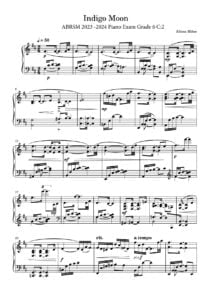 |
|
| ABRSM Piano Exam 2023-24 Jester’s Jig by Chee-Hwa Tan |
 |
|
| ABRSM Piano Exam 2023-24 Love Theme by Catherine Rollin |
 |
|
| ABRSM Piano Exam 2023-24 Minuet In G (Anonymous) |
 |
|
| ABRSM Piano Exam 2023-24 The Song Of Twilight by Yoshinao Nakada |
 |
|
| ABRSM Piano Exam Pieces Grade 1 2013 & 2014 syllabus |
 |
ABRSM Piano Exam Pieces Grade 1 2013 & 2014 syllabus |
| ABRSM Piano Exam Pieces Grade 1 2023 2024 |
 |
ABRSM Piano Exam Pieces Grade 1 2023 2024 |
| ABRSM Piano Exam Pieces Grade 1 2025 2026 |
 |
ABRSM Piano Exam Pieces Grade 1 2025 2026 |
| ABRSM Piano Exam Pieces Grade 2 2023 2024 |
 |
ABRSM Piano Exam Pieces Grade 2 2023 2024 |
| ABRSM Piano Exam Pieces Grade 3 2013 2014 |
 |
|
| ABRSM Piano Exam Pieces Grade 3 2023 2024 |
 |
ABRSM Piano Exam Pieces Grade 3 2023 2024 |
| ABRSM Piano Exam Pieces Grade 3 2025 2026 |
 |
ABRSM Piano Exam Pieces Grade 3 2025 2026 |
| ABRSM Piano Exam Pieces Grade 4 2021 2022 |
 |
ABRSM Piano Exam Pieces Grade 4 2021 2022 |
| ABRSM Piano Exam Pieces Grade 4 2023 2024 |
 |
|
| ABRSM Piano Exam Pieces Grade 5 2023 2024 |
 |
ABRSM Piano Exam Pieces Grade 5 2023 2024 |
| ABRSM Piano Exam Pieces Grade 6 2023 2024 |
 |
ABRSM Piano Exam Pieces Grade 6 2023 2024 |
| ABRSM Piano Exam Pieces Grade 7 2023 2024 |
 |
ABRSM Piano Exam Pieces Grade 7 2023 2024 |
| ABRSM Piano Exam Pieces Grade 8 2023 2024 |
 |
ABRSM Piano Exam Pieces Grade 8 2023 2024 |
| ABRSM Piano Exam Pieces Grade 8 2025 2026 |
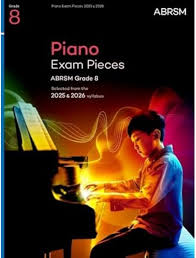 |
ABRSM Piano Exam Pieces Grade 8 2025 2026 |
| ABRSM Piano Mix 3 for Easy Piano Grades 3-4 |
 |
ABRSM Piano Mix 3 for Easy Piano Grades 3-4 |
| ABRSM Piano Prep Test |
 |
|
| ABRSM Piano Scales And Arpeggios from 2021 Guide For Practical Grades |
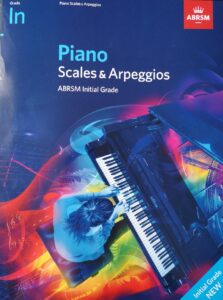 |
|
| ABRSM Selected Piano Exam 2011 2012 Grade 1 |
 |
|
| ABRSM Selected Piano Exam Grade 2 (2011 2012 ) |
 |
|
| ABRSM Specimen Aural Tests Grade 1 to 3 |
 |
|
| ABRSM Specimen Aural Tests Grade 4 & 5 |
 |
|
| ABRSM Teaching notes on piano exam pieces (2013 & 2014) |
 |
|
| ABRSM The Manual Of Scales Broken Chords And Arpeggios For Piano |
 |
|
| ABRSM Theory of Music Exams Grade 8 (The Associated Board of Royal Schools of Music) 2010 |
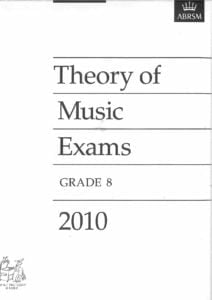 |
|
| AC/DC – Classic – Early Years – High Voltage And Let There Be Rock (Guitar Tab Songbook) |
 |
ACDC – Classic – Early Years – High Voltage And Let There Be Rock |
| AC/DC – Jam With AC/DC (PDF with MP3 audio tracks Guitar Tab Songbook) |
 |
Jam With ACDC |
| AC/DC Rock Score |
 |
|
| AC/DC, Best of (Guitar & Tablature) |
 |
Best Of ACDC (Guitar) |
| Ace Of Base – Beautiful Life | ||
| Ace Of Base – Dont Turn Around | ||
| Ace Of Base – Living In Danger | ||
| Acoustic 33 TOP Guitar Hits (Guitar Songbook) with Tablature – sheet music |
 |
Acoustic 33 TOP Guitar Hits (Guitar Songbook) – sheet music |
| Acoustic Blues Guitar By Kenny Sultan Guitar Tab |
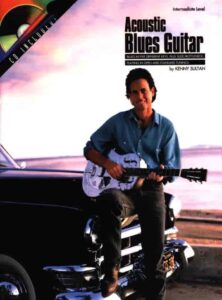 |
Acoustic Blues Guitar |
| Acoustic Blues Guitar Keith Wyatt with TABs |
 |
Acoustic Blues Guitar Keith Wyatt with TABs |
| Acoustic Blues Guitar Styles (Larry Sandberg) (with Tablature) |
 |
Acoustic Blues Guitar Styles (Larry Sandberg) |
| Acoustic Classics 42 songs Piano Vocal Guitar |
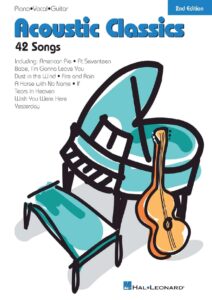 |
Acoustic Classics 42 songs Piano Vocal Guitar |
| Acoustic Guitar Bible (35 great songs) Guitar with TABs |
 |
Acoustic Guitar Bible (35 great songs) Guitar with TABs |
| Acoustic Rock (Guitar) Rolling Stones, Green Day, Pink Floyd, Bob Dylan (Songbook Guitar Tab) with Tablature |
 |
|
| Acoustic Rock 90’s, Best of – Guitar with Tablature |
 |
Acoustic Rock 90’s, Best of – Guitar |
| Acqua azzurra acqua chiara (Battisti) | ||
| Ad Te Levavi (Musescore File).mscz | ||
| Adagio (Lara Fabian) | ||
| Adagio MP3.zip | ||
| Adah’s Theme (La femme avec les yeux lumineux) Sex and the City |
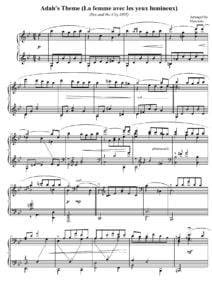 |
|
| Adah’s Theme (Le femme avec les yeux lumineux) Sex and the Cit | ||
| Adam – Adolphe Charles Holy Night Cantique-Nöel |
 |
|
| Adam – Cantique de Nöel Minuit Chretiens | Adam – Cantique de Noel Minuit Chretiens VS | |
| Adam – Derniers souvenirs d’un musicien |
 |
|
| Adam – O Holy Night | Adam – O Holy Night | |
| Adam – Souvenirs d’un musicien |
 |
|
| Adam (Cappeau) – Cantique de Noël. Easy Piano with voice or instrument (Paroles and lyrics) |
 |
Adam-Cappeau-Cantique-de-Noel- |
| Adam (Cappeau) – Cantique de Noel. Easy Piano with voice or instrument.mscz | ||
| Adam Cantique de Nöel Christmas song | Adam Cantique de noel | |
| Adam Carse – The History Of Orchestration Adam Carse |
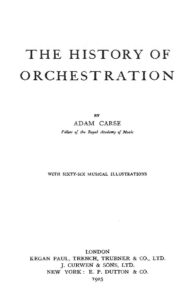 |
|
| Addams Family Theme (Musescore File).mscz | ||
| Addams Family Theme (Easy Piano) |
 |
|
| Addio Colonnello (Ennio Morricone) | ||
| Adele Songs from the Album 21 For SATB, SSA and Piano |
 |
Adele Songs from the Album 21 |
| Adele – 21 |
 |
ADELE 21 SONGBOOK |
| Adele – Chasing Pavements Piano Vocal guitar chords |
 |
|
| Adele – Easy on me (Piano solo with lyrics) |
 |
|
| Adele – Rolling in the Deep |
 |
|
| Adele – Rumor Has It |
 |
|
| Adele – Set Fire to the Rain |
 |
|
| Adele – Set Fire To The Rain (2) (Musescore File).mscz | ||
| Adele – Someone Like You | Adele – Someone Like You | |
| Adele – Someone Like You easy piano |
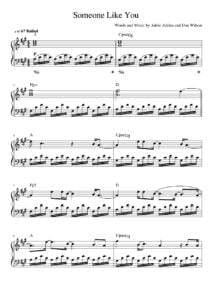 |
|
| Adele – The Best Of SongBook (12 songs arranged for easy piano) |
 |
Adele – The Best Of SongBook (12 songs arranged for easy piano) |
| Adele 19 [Piano, Guitar, Vocals] |
 |
Adele 19 [Piano, Guitar, Vocals] |
| Adele 25 Songbook |
 |
Adele 25 Songbook Contents —  |
| Adele Best Of Adele Big Note Piano (Adele Adkins) |
 |
Adele Best Of Adele Big Note Piano (Adele Adkins) |
| Adele Easy On Me Sheet Music |
 |
|
| Adele Original Keys For Singers (Adele) |
 |
Adele Original Keys For Singers (Adele) |
| Adele Skyfall (Piano Vocal Guitar Chords) | Adele Skyfall (Piano Vocal Guitar Chords) | |
| Adios Amor – Goodbye My Love as recorded by José Feliciano |
 |
|
| Adult All In One Course Level 1 With Audio Mp3 (Willard Palmer) |
 |
Lessons Alfred’s Basic Adult Piano Course Level 1 |
| Adult All In One Course Level 2 With Audio Mp3 (Willard Palmer) |
 |
Willard Palmer – Adult All-In-One Course Level 2 |
| Adult Greatest Movie Hits Piano Level 1 |
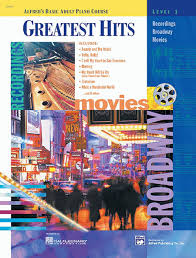 |
Adult Greatest Movie Hits Piano Level 1 |
| Adult Piano Adventures ALL-IN-ONE PIANO COURSE 1 |
 |
|
| Adult Piano Adventures All-In-One Piano Course Book 2 Book With Media Online (Nancy Faber, Randall Faber) Sheet Music |
 |
|
| Adult Piano Adventures Christmas – Book 1 (Nancy Faber Randall Faber) |
 |
|
| Adult Piano Adventures Christmas – Book 2 |
 |
Adult Piano Adventures Christmas – Book 2 |
| Adult Piano Adventures Popular Book 1 – Timeless Hits and Popular Favorites (Adult Piano Adventures Popular) |
 |
Adult Piano Adventures Popular Book 1 – Timeless Hits and Popular Favorites (Adult Piano Adventures Popular) |
| Adult Piano Course Greatest Movie Hits Piano Level 1 Recordings Broadway Movies |
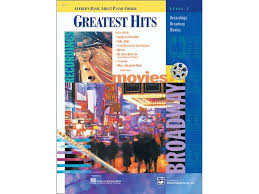 |
Adult Piano Course Greatest Movie Hits Piano Level 1 Recordings Broadway Movies |
| Advanced Harmonic Concepts by Wayne Naus (with audio MP3) |
 |
Advanced Harmonic Concepts by Wayne Naus |
| Advanced Harmonic Exercises For Jazz Piano |
 |
advanced harmonic exercises |
| Advanced Piano Solos 1 Encyclopedia by Tom Roed |
 |
Advanced Piano Solos 1 Encyclopedia by Tom Roed |
| Advanced Piano Solos 2 Complete by Tom Roed |
 |
Advanced Piano Solos 2 Complete by Tom Roed |
| Advanced Sacred Music Piano Solos by John Kraus |
 |
|
| Advanced Scale Concepts and Licks for Guitar (PDF + MP3 audio tracks Play Along) with Tablature |
 |
 |
| Aebersold – 110 – When I fall In Love – Romantic Ballads pdf with embedded audio MP3 Tracks |
 |
Jazz Play Along Vol 110 [When i Fall in Love] |
| Aebersold – 113 Embraceable You – Vocal Standards with audio MP3 Tracks |
 |
Jamey Aebersold – Vol 113 |
| Aebersold – 30 blues scale By Jamey Aebersold | Aebersold – 30 blues scale By Jamey Aebersold | |
| Aebersold – A New Approach To Jazz Improvisation Gettin’it together vol. 21 |
 |
aebersold gettin all together vol 21 |
| Aebersold – Practice Procedures For Memorizing Scales And Chords | Aebersold – Practice Procedures For Memorizing Scales And Chords | |
| Aebersold – Rapid Reference Vol 1-114 | Aebersold – Rapid Reference Vol 1-114 | |
| Aebersold – Vol 01 – How to Play and Improvise Jazz (with audio MP3) |
 |
Aebersold – Vol 01 – How to Play and Improvise Jazz |
| Aebersold – Vol 03 – The II-V7-I Progression Jazz Play Along Book + Audio Mp3 |
 |
|
| Aebersold – Vol 105 – Dave Brubeck Jazz Play Along Book + Audio Mp3 |
 |
|
| Aebersold – Vol 118 – [Groovin Jazz] (with audio MP3) |
 |
|
| Aebersold – Vol 32 – Ballads Jazz Play Along Book + Audio Mp3 |
 |
|
| Aebersold – Vol 34 – Jam Session Jazz Play Along Book + Audio Mp3 |
 |
Includes MP3 Play along themes as Blue moon, The shadow of your smile, Over the rainbow, etc. |
| Aebersold – Vol 45 – [Bill Evans] Jazz Play Along Book + Audio Mp3 |
 |
Aebersold – Vol 45 – [Bill Evans] |
| Aebersold – Vol 58 – Unforgettable Standards Jazz Play Along Book + Audio Mp3 |
 |
aebersold unforgettable standards sheet music |
| Aebersold – Vol 76 – David Baker – How To Learn Tunes (A Jazz Musician’s Survival Guide) |
 |
how to learn tunes |
| Aebersold 25 How To Practice By Jamey Aebersold | Aebersold 25 | |
| Aebersold Antonio Carlos Jobim Vol 98 – Bossa Nova Songbook Jazz Play Along Book + Audio Mp3 |
 |
Aebersold Antonio Carlos Jobim Vol 98 – Bossa Nova Songbook |
| Aebersold Anyone Can Improvise – 52 Points To Remember | Aebersold Anyone Can Improvise – 52 Points To Remember | |
| Aebersold Jazz EAR training (with audio MP3) |
 |
Aebersold Jazz EAR train |
| Aebersold Jazz Handbook 09 Tips For Learning A New Tune & Practice Procedures For Memorizing |
 |
Aebersold Jazz HANDBOOK |
| Aebersold Jazz Play-Along Books & audio MP3 1st Part Full Collection – Vol 1- 40 (with MP3) for all instruments |
Compressed file  Aebersold Full Collection Part 1 – Vol 1- 40 Aebersold Full Collection Part 1 – Vol 1- 40 |
40 volumes with MP3 Aebersold Book Index Vol.001-106 |
| Aebersold Jazz Play-Along Books & audio MP3 2nd Part Full collection Vol 41- 75 for all instruments | Compressed fileAebersold Full Collection Part 2 – Vol 41- 75.. | 35 volumes with MP3 Aebersold Book Index Vol.001-106 |
| Aebersold Jazz Play-Along Books & audio MP3 3rd Part Full Collection – Vol 76- 112 (with MP3) | Compressed fileAebersold Full Collection Part 3 – Vol 76- 112 | 37 volumes with MP3 Aebersold Book Index Vol.001-106 |
